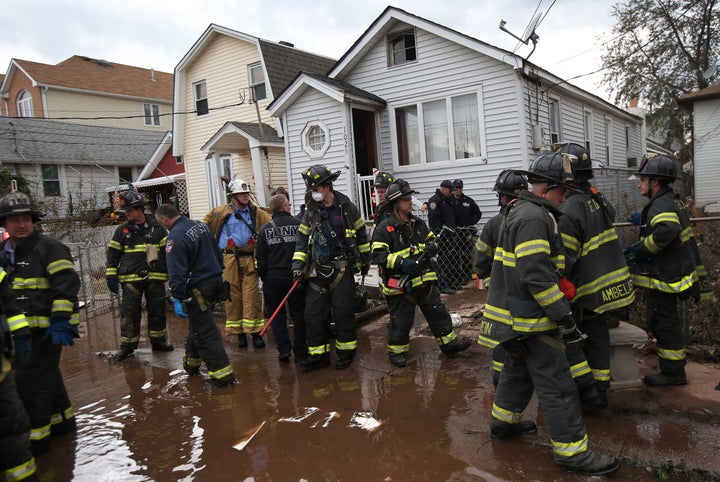
The New York Times recently printed a story describing how the sewage systems of New York and New Jersey were badly damaged by Hurricane Sandy:
Hundreds of millions of gallons of raw and partially treated sewage from crippled treatment plants have flowed into waterways in New York and New Jersey, exposing flaws in the region's wastewater infrastructure that could take several years and billions of dollars to fix.
One could be forgiven for seeing this as just one more article identifying the harms from Sandy, but I think it illustrates something else. If you had known in advance that Sandy would hit the Northeast as it did, the chances are good that you could have predicted many of the consequences. It was no surprise that power went out, that houses were damaged and destroyed, that people were stranded, and so on. You might not, however, have immediately thought about a failure of the sewage system. Yet this particular consequence will be among the most long-lasting and expensive to emerge from Hurricane Sandy.
The systems in New York and New Jersey failed because sewage plants were flooded by massive storm surges. The ultimate problem, though, was not the flooding itself, but rather how it affected the plants. It caused them to shut down, which, in turn, caused enormous amounts of raw sewage to flow where it is not supposed to go. In short, the sewage system failed.
Part of the problem, of course, is that the sewage plants in the region were built for a climate that is no longer with us. They are ill-suited for the more powerful and destructive storms that will be a regular part of life from now on. Without major investments, the next storm will have the same kind of damage and will expose millions of people to health risks.
We need to be concerned about more than just sewage systems, though. The sewage problem in New York and New Jersey is just one manifestation of a larger danger. Once we start to think about how climate change can undermine the basic structures we have built and upon which we rely, it becomes clear that virtually everything is at risk. Entire urban transportation systems can be paralyzed when tracks, equipment, or key subway stations are badly damaged. National transportation systems rely on ports that can be disabled or destroyed by storms. Power and communication systems are obviously vulnerable, as Sandy demonstrated. Agriculture can be affected as salt water from rising seas destroys productive land. Water systems in much of the country are also at risk. In California, for example, a failure of levees in Northern California -- something made much more likely as seas rise -- could cause salt water to rush into the Sacramento-San Joaquin Delta and shut down freshwater supplies to twenty million Californians for months. You get the idea.
The lesson here is that we need to see climate change as more than simply a series of weather events that will cause the same kind of harm that weather always causes. Though the direct damage caused by disasters like hurricanes Katrina, Irene, and Sandy or the 2012 North American drought are devastating, they are only (to use a climate-change-relevant metaphor) the tip of the iceberg. Each such event puts a strain on the basic infrastructure upon which we rely for our daily lives: sewage, health care, food, water, transportation, communication. Sometimes these systems will be strained enough to fail, and when they do, as happened to sewage systems during Hurricane Sandy, costs (both human and financial) skyrocket.
So the next time someone discusses the costs of climate change, if they don't confront the reality that our infrastructure is not ready, you can be sure that they are leaving out a lot -- perhaps most -- of the costs we will actually face.
Andrew Guzman's most recent book, Overheated: The Human Cost of Climate Change (Oxford University Press) is due out in February.